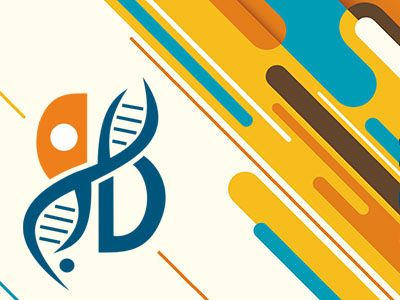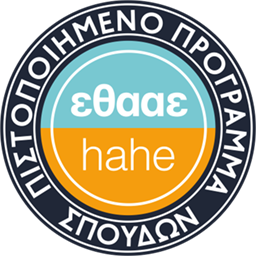Bioorganic Chemistry

Theory: 3 hours/week | Tutorials: 1hour/week | Practicals: 3 hours/week | ECTS Units: 6
Content – Aim of the course
- Presentation of the most important reactions of alcohols and thiols, ethers, epoxides and sulfides, carbonyl compounds, carboxylic acids and their derivatives, aliphatic amines and aryl amines and phenols.
- Application of retrosynthesis of widely known natural products and drugs.
- Knowledge of the chemical composition, understanding the structure and function of organic compounds found in living organisms (biomolecules) and the way in which they affect the processes of every living organism.
- Classification of carbohydrates as aldoses, ketoses, D or L sugars, monosaccharides or polysaccharides.
- Recognition of the common amino acids, design of the correct stereochemistry and bipolar form and understanding of acid-base behavior.
- Determination of the structure of peptides and proteins.
- Design of the structures of fats and oils, terpenes, steroids and other lipids.
- Design of purines, pyrimidines, nucleosides, nucleotides and DNA.
- Comparison of the aromaticity of the pyrrole, furan, thiophene and pyridine to that of benzene.
The course is accompanied by laboratory exercises for the better approach and understanding of the essence of Chemistry. The laboratory exercises are carried out in the Department of Chemistry and in groups of 2-3 people.
Analytical Description of the Course
Carboxylic acids. Derivatives of carboxylic acids and nucleophilic reactions acyl substitution. Reactions of a-carbonyl substitution. Reactions of carbonyl condensation. Aliphatic amines. Arylamines and phenols. Biomolecules: Carbohydrates. Monosaccharides, disaccharides, polysaccharides. Biomolecules: Amino Acids, Synthesis, Separation Reactions. Structure and nomenclature of peptides and proteins. Lipids, waxes, triglycerides, saponification of fats and oils. Terpenes. Heterocyclic compounds, nucleic acids and nucleotides. Electrophilic substitution reactions of pyrrole, furan and thiophene. Pyridine, electrophilic substitution of pyridine, nucleophilic substitution of pyridine.
Labratory Exercises
- Oxidation of Benzylic alcohol with KMnO4
- Synthesis of acetyl-salycilic acid and salycilic methyl ester
- Hydrolysis of Benzoic Methyl ester
- Aldol condensation
- Isomerization of 1, 2, 3, 4, 6, -penta-O-acetyl-β-D-glucopyranose to 1, 2, 3, 4, 6, -penta-O-acetyl-a-D-glucopryranose
Evaluation
The graduation of students is based on their performance in the examinations during the examination period and based on their performance in the execution and presentation of laboratory exercises.
Reading Suggestions
- Organic Chemistry, L.G. Wade, JR., Publisher Tziolas, 7thEdition.
- Organic Chemistry, John Mc Murry, University of Crete.
- Heterocyclic Chemistry at a Glance (1st edition), JOHN A. JOULE, KEITH MILLS. Editor: B. Sarlis, Publisher: Parisianou SA 2011.
- Bioorganic Chemistry, Liakopoulou-Kiriakidou Editions: Ziti, Thessaloniki, 2004.
Related scientific journals:
- Journal of Organic Chemistry
- European Journal of Medicinal Chemistry
- Bioorganic & Medicinal Chemistry
- Carbohydrate Research
Teaching Material / E-class
Lecturers

Christos Mitsos (Course Coordinator)






